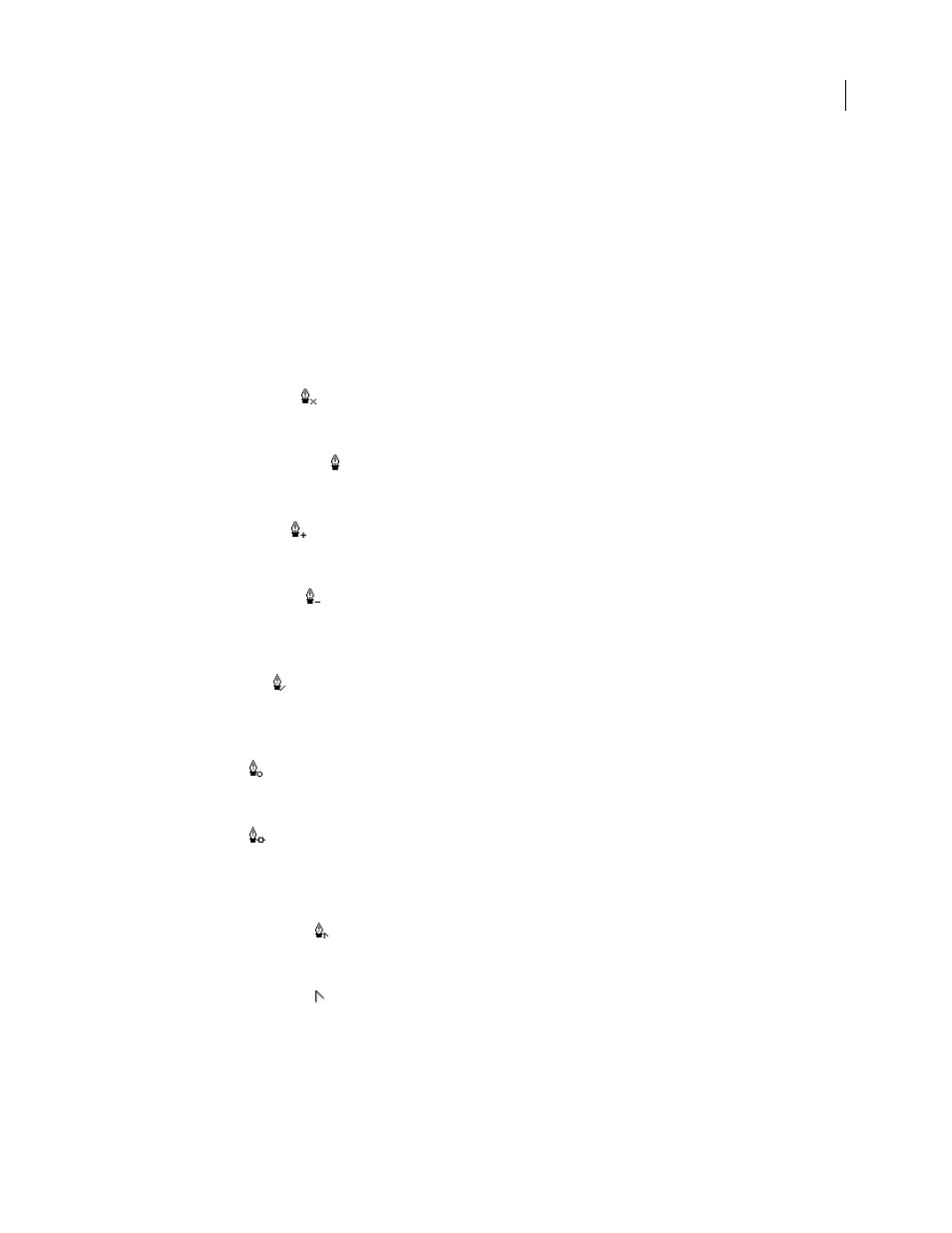Drawing with the pen tool, Interacting with the pen tool – Adobe Flash Professional CS3 User Manual
Page 179

FLASH CS3
User Guide
173
Drawing with the Pen tool
Interacting with the Pen tool
To draw precise paths as straight lines or smooth, flowing curves, use the Pen tool. When you draw with the Pen tool,
click to create points on straight line segments, and drag to create points on curved line segments. Adjust straight
and curved line segments by adjusting points on the line. Convert curves to straight lines and the reverse, and display
points on lines that you create with other Flash drawing tools, such as the Pencil, Brush, Line, Oval, or Rectangle
tools, to adjust those lines.
The Pen tool provides feedback about its current drawing state by displaying different pointers. The various drawing
states are indicated by the following pointers:
Initial Anchor Point pointer
The first pointer you see when you select the Pen tool. Indicates that the next mouse
click on the stage will create an initial anchor point, which is the beginning of a new path (all new paths begin with
an initial anchor point). Any existing drawing paths are terminated.
Sequential Anchor Point pointer
Indicates that the next mouse click will create an anchor point with a line
connecting it to the previous anchor point. This pointer is displayed during the creation of all user-defined anchor
points except the initial anchor point of a path.
Add Anchor Point pointer
Indicates that the next mouse click will add an anchor point to an existing path. To add
an anchor point, the path must be selected, and the Pen tool must not be over an existing anchor point. The existing
path is redrawn based on the additional anchor point. Only one anchor point can be added at a time.
Delete Anchor Point pointer
Indicates that the next mouse click on an existing path will remove an anchor point.
To remove an anchor point, the path must be selected with the Selection tool, and the pointer must be over an
existing anchor point. The existing path is redrawn based on the removal of the anchor point. Only one anchor point
can be removed at a time.
Continue Path pointer
Extends a new path from an existing anchor point. For this pointer to be activated, the
mouse must be over an existing anchor point on a path. This pointer is only available when you are not currently
drawing a path. The anchor point does not have to be one of the terminal anchor points of a path; any anchor point
can be the location of a continued path.
Close Path pointer
Closes the path you’re drawing on the starting point of the path. You can only close a path that
you are currently drawing, and the existing anchor point must be the starting anchor point of the same path. The
resulting path does not have any specified fill color settings applied to the enclosed shape; apply fill color separately.
Join Paths pointer
Similar to the Close Path Tool except that the mouse must not be over the initial anchor point
of the same path. The pointer must be over either of the terminal points of a unique path. The segment may or may
not be selected.
Note: Joining paths may or may not result in a closed shape.
Retract Bezier Handle pointer
Appears when the mouse is over an anchor point whose Bezier handles are
displayed. Clicking the mouse retracts the Bezier handles, and causes the curved path across the anchor point to
revert to straight segments.
Convert Anchor Point pointer
Converts a corner point without direction lines to a corner point with
independent direction lines. To enable the convert anchor point pointer, use the Shift + C modifier keys to toggle the
Pen tool.
For a video tutorial about the Pen tool, see